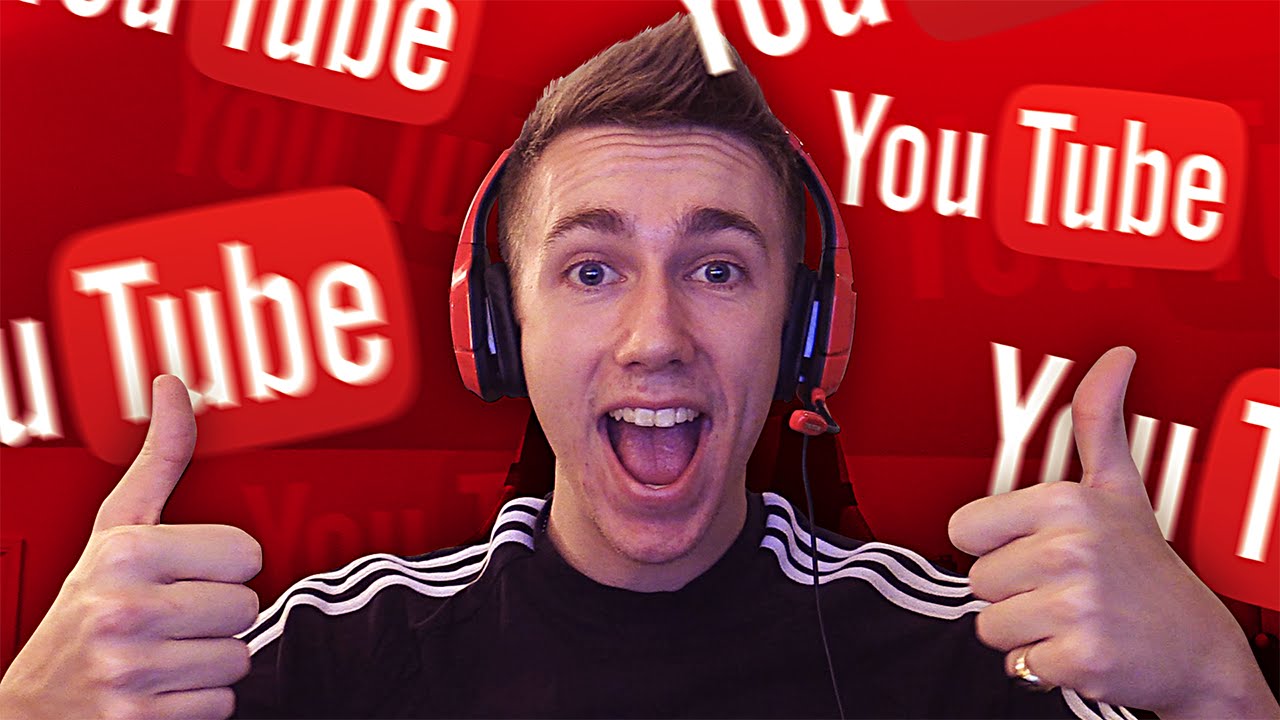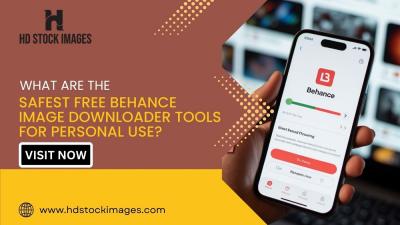In today’s digital age, the idea of being a YouTuber has shifted from a hobby to a legitimate career path for many. With millions of creators around the globe, YouTube offers a platform for individuals to share their passions, connect with audiences, and even earn a living. But is it really a “job”? Let’s dive into the realities of a YouTube career and explore what it takes to succeed in this vibrant ecosystem.
The Evolution of YouTube as a Profession

When YouTube launched in 2005, it was primarily a space for personal videos, cat clips, and quirky homemade content. Fast forward to today, and the platform has transformed into a professional playground for content creators, influencers, and brands. This evolution has not only changed the way we consume media but also how people view careers in the digital space.
Initially, many creators joined YouTube for fun, but as the platform grew, so did opportunities for monetization. Here are some key milestones in the evolution of YouTube as a profession:
- Monetization Features: In 2007, YouTube introduced the Partner Program, allowing creators to earn money through ads. This was a game-changer, as it provided a financial incentive for creators to produce and share quality content.
- Diverse Content Types: The rise of various content genres—vlogs, tutorials, gaming, and ASMR—allowed creators to carve out niches and attract specific audiences, making it possible for them to build dedicated followings.
- Brand Collaborations: As YouTube grew in popularity, brands recognized the potential for influencer marketing. Creators began collaborating with companies, promoting products, and integrating sponsorships into their content, further solidifying YouTube as a viable career path.
- Community and Engagement: YouTube has become a social platform, allowing creators to engage directly with their audiences. This community aspect has cultivated loyalty, often leading to more sustainable careers for creators.
- Emergence of YouTube as a Learning Resource: Channels dedicated to education and skill development have gained traction, offering everything from coding lessons to cooking tutorials. This diversification has attracted a wider audience and made YouTube a trusted source for knowledge.
Today, successful YouTubers can earn income through multiple streams, including:
- Ad revenue from YouTube Partner Program
- Sponsorships and brand deals
- Merchandise sales
- Memberships and Patreon support
- Affiliate marketing
However, the journey to becoming a full-time YouTuber is not without challenges. The competition is fierce, and maintaining a consistent upload schedule while engaging with viewers can be demanding. Moreover, algorithm changes and platform policies can impact visibility and revenue, adding to the uncertainty of the profession.
In conclusion, the evolution of YouTube as a profession highlights both the opportunities and obstacles that come with this career path. For many, it’s more than just a job; it’s a passion that requires dedication, creativity, and adaptability. As the platform continues to grow, so too will the possibilities for those looking to make a name for themselves in the world of YouTube.
Also Read This: Why YouTube TV Keeps Pausing and How to Fix Playback Issues
3. How YouTube Creators Make Money
Many people wonder, "How do YouTube creators actually make money?" It's not just about posting videos and hoping for the best. There are several avenues through which creators can monetize their content. Let’s break them down!
1. Ad Revenue: This is the most common way YouTubers earn money. Once a creator joins the YouTube Partner Program, they can enable ads on their videos. The revenue they earn depends on factors like viewer engagement and the number of views. On average, creators might earn between $0.01 to $0.03 per view, but this varies widely.
2. Sponsorships: Many creators partner with brands to promote products or services. These sponsorships can be lucrative! For example, a tech YouTuber might review the latest smartphone, and in return, the brand pays them a flat fee or gives them a commission on sales generated through their video.
3. Merchandise Sales: Creators often sell branded merchandise—like T-shirts, hats, or mugs—to their fans. Platforms like Teespring or Merch by Amazon make this easy. Consider YouTuber MrBeast, who launched a clothing line that generates millions in revenue!
4. Crowdfunding: Sites like Patreon allow fans to support creators directly. In exchange for their support, fans may receive exclusive content or perks. This model can provide a steady income, especially for niche creators.
5. Affiliate Marketing: Many YouTubers use affiliate links to earn commissions on products they recommend. If a viewer buys something through their link, the creator gets a cut. It’s a win-win, as viewers often appreciate the recommendations!
All these avenues show that being a YouTuber can be a legitimate way to earn a living. However, it takes time, strategy, and a lot of hard work to build a successful channel that generates significant income.
Also Read This: Can You Upload Two Videos at Once on YouTube? Everything You Need to Know
4. The Skills Required for Success on YouTube
So, what does it take to thrive as a YouTuber? While having a great camera and editing software helps, there are essential skills every creator should develop:
- Content Creation: This is at the heart of YouTube. Creators must be able to generate engaging ideas and produce high-quality videos that resonate with their audience. Think of how Marques Brownlee creates in-depth tech reviews that are both informative and entertaining.
- Video Editing: Knowing how to edit videos is crucial. A well-edited video can keep viewers engaged and enhance the overall quality. Tools like Adobe Premiere Pro and Final Cut Pro are popular, but even simpler software can do the job if you know what you're doing.
- SEO Understanding: Just posting a video isn’t enough; you need to understand how to optimize it for search. This includes using the right keywords in titles, descriptions, and tags. Successful YouTubers often research trending topics to ensure their content reaches a wider audience.
- Branding and Marketing: Personal branding is key. Creators should develop a unique voice and style that sets them apart. Marketing skills are also essential to promote videos across social media platforms effectively.
- Community Engagement: Building a loyal audience requires interaction. Engaging with viewers through comments, social media, and live streams fosters a community that keeps people coming back for more.
In conclusion, while being a YouTuber can seem like a dream job, it requires a diverse set of skills and a lot of dedication. Those who put in the effort can turn their passion into a rewarding career!
Also Read This: Can You Make Money Reposting Videos on YouTube? Understanding the Rules
5. The Challenges YouTubers Face in Their Careers
Being a YouTuber might seem like a dream job—flaunting creativity, engaging with an audience, and enjoying the flexibility of working from anywhere. However, it’s important to peel back the layers and understand the real challenges lurking beneath the surface. Here are some significant hurdles that many YouTubers encounter:
- Content Saturation: With millions of channels and endless content, standing out is a monumental task. Many creators find themselves battling against trends and algorithms to get noticed.
- Burnout: The pressure to produce regular, high-quality content can lead to burnout. Many YouTubers feel the strain of constant creation, which can stifle creativity and passion.
- Monetization Challenges: Not every video goes viral, and income can be inconsistent. YouTubers must navigate changing ad policies, sponsorship deals, and audience preferences to maintain revenue.
- Trolling and Negative Feedback: The internet can be a harsh place, and YouTubers often face criticism and trolling. This negativity can impact mental health and confidence.
- Technical Skills: Not everyone is a tech whiz. YouTubers must invest time in learning video editing, SEO optimization, and social media marketing to be successful.
While these challenges can be daunting, many YouTubers overcome them by fostering a strong community and maintaining a passion for their craft. The key is resilience and adaptability, allowing them to navigate the ups and downs of the platform.
Also Read This: Using a YouTube Video as Your Alarm: A Step-by-Step Guide
6. Balancing Creativity and Business on YouTube
For YouTubers, balancing creativity with the business side of things can feel like a tightrope walk. On one hand, you want to create authentic, engaging content that represents your unique voice. On the other hand, the realities of running a channel often require a business mindset. Here’s how many creators strike that balance:
- Establishing a Brand: Successful YouTubers often develop a personal brand that reflects their interests and personality. This helps attract a loyal audience while making their content more marketable.
- Content Planning: Many creators use content calendars to plan their videos in advance. This allows them to stay organized and ensure they’re producing a mix of creative and trending content.
- Engaging with the Audience: Listening to audience feedback can inspire creative ideas while also catering to the preferences of the community, keeping viewers invested in the channel.
- Finding Sponsorships: Collaborating with brands is a great way to monetize content without sacrificing creativity. Many YouTubers integrate sponsored content naturally to maintain authenticity.
- Continuous Learning: The digital landscape is constantly evolving. Successful YouTubers invest time in learning about new trends, editing techniques, and marketing strategies to keep their content fresh and relevant.
At the end of the day, YouTubers who thrive are those who can creatively express themselves while also navigating the business aspects of their channel. Embracing both sides can lead to a fulfilling and sustainable YouTube career.
Also Read This: How to Make a Roblox YouTube Thumbnail for Your Gaming Videos
7. Case Studies of Successful YouTubers
When we talk about successful YouTubers, it’s important to highlight real examples that illustrate the potential of a YouTube career. Let’s dive into a few case studies of individuals who turned their passion for video into a thriving career.
1. PewDiePie (Felix Kjellberg)
- Content Type: Gaming, Comedy, Vlogs
- Subscribers: Over 110 million
- Revenue Streams: Ad revenue, sponsorships, merchandise
PewDiePie is one of the most recognizable names on YouTube. He started his channel in 2010, primarily focusing on gaming content and “Let’s Play” videos. Over the years, he diversified his content to include vlogs and comedy sketches. His massive following has allowed him to secure lucrative sponsorships and launch his own merchandise line, proving that with creativity and consistency, one can build a massive brand.
2. Jenna Marbles (Jenna Mourey)
- Content Type: Comedy, Lifestyle
- Subscribers: Over 20 million
- Revenue Streams: Ad revenue, sponsorships
Jenna Marbles was one of the first major female YouTubers, known for her humorous takes on everyday situations. She began her channel in 2010 and quickly gained popularity with her relatable content. Her authenticity resonated with millions, and although she stepped back from YouTube, her impact on the platform remains significant. She exemplifies how a personal brand can be built through genuine engagement with an audience.
3. MrBeast (Jimmy Donaldson)
- Content Type: Challenges, Philanthropy
- Subscribers: Over 200 million
- Revenue Streams: Ad revenue, sponsorships, merchandise, philanthropic ventures
MrBeast has revolutionized YouTube philanthropy. Known for his extravagant challenges and giving away large sums of money, he has built a massive empire. His creative and often outrageous video concepts have attracted millions of viewers, making him one of the highest-earning YouTubers. His approach demonstrates that creativity, combined with a strong social message, can lead to significant financial success.
4. Tasty
- Content Type: Cooking, Food
- Subscribers: Over 20 million
- Revenue Streams: Ad revenue, sponsored content
Tasty, BuzzFeed's cooking channel, is a perfect example of how a brand can use YouTube to expand its reach. With visually engaging recipe videos that cater to food lovers, Tasty has created a community around culinary arts. This channel showcases how established brands can successfully integrate into the YouTube ecosystem while driving traffic back to their primary platforms.
These case studies highlight that success on YouTube is varied. Whether through personal branding, innovative content, or tapping into niche markets, individuals can achieve remarkable careers on this platform. It’s not just about the number of subscribers but also about engagement, creativity, and understanding the audience.
8. Conclusion: Is YouTube a Viable Career Choice?
So, is being a YouTuber a real job? The answer is a resounding yes, but with a few caveats. A career on YouTube can be incredibly rewarding, but it requires dedication, creativity, and a willingness to adapt. Here are some key takeaways to consider:
- Commitment: Building a YouTube channel is not an overnight success. It demands consistent effort in content creation, audience engagement, and marketing.
- Skill Development: Successful YouTubers often wear many hats—filmmaker, editor, marketer, and sometimes even a business manager. Learning these skills can greatly enhance a YouTuber’s chances of success.
- Financial Realities: While top creators can make substantial incomes, many channels struggle to monetize effectively. Diversifying income through sponsorships, merchandise, or even Patreon can create a more stable financial foundation.
- Community Focus: Engaging with your audience is crucial. Understanding what your viewers enjoy and adapting your content accordingly can lead to a more devoted following.
In conclusion, YouTube can certainly be a viable career choice for those willing to put in the work and navigate its challenges. Whether you're considering starting a channel or simply curious about the platform, remember that success often comes from passion and perseverance. Just like any traditional career, it has its ups and downs, but with the right approach, you might just find your niche in the vibrant world of YouTube!
 admin
admin








